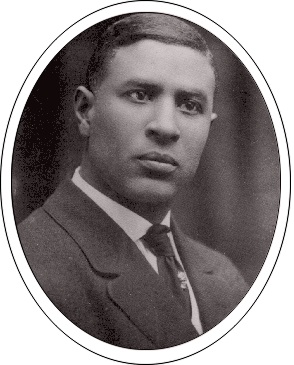The man who signalled a new era

As Living Streets’ new campaign calls for improvements to signalised crossings, we shine a light on the remarkable legacy of a man who was one of the first to put road safety first.
Khushi Bajaj, our Youth Campaigns Officer, reflects on the ground-breaking invention that increased road safety and saved countless lives.

If you have ever navigated a road safely, then you have Garrett A Morgan to thank.
Morgan was the son of formerly enslaved people in the United States. He was born in Paris, Kentucky on March 4, 1877, a time and place when the abolition of slavery in 1865 was facing violent resistance, especially in the US south where he spent his childhood.
He would soon move to Ohio in the Midwest. There, in 1919 he started a newspaper called the Cleveland Call, the city’s biggest African American paper at a time when white supremacist organisations were out of control. He was also an active member of the Cleveland Association of Coloured Men and the National Association for the Advancement of Coloured People.
However by this time, he had already started to demonstrate his dedication to making things better.
This began with the day-to-day problems he encountered in his work. He was working on two early patents which were helping him and his family become financially secure, while distributing his wealth to fund Black colleges and start the first Black country club.
But in 1914, Morgan patented his first invention that would actually save lives: a ‘safety hood’ or mask that would enable people to breathe even in the presence of smoke or harmful gasses. Initially marketed to firemen, it went on to become the prototype for the mask that would end up being used in the First World War.

Garrett A Morgan - Public domain, via Wikimedia Commons
Morgan's creativity, intellect, and compassion have saved countless lives over this century and will continue to do so in the decades to come.

That’s when his story becomes part of the history of road safety.
These were the days that saw pedestrians and animal-driven carts having to share the road with the first motor vehicles.
Collisions soon became common. And while the first traffic lights had been introduced, they had only two signals: stop and go. This meant that there were a lot of collisions at intersections, and the threat to life became a real problem.
As the first Black man in Cleveland to own a car, Morgan had already developed a friction-driven clutch. However, witnessing a crash led to him deciding to do something about the traffic lights issue.
Morgan’s invention was the three-way-traffic light – with the crucial addition of an amber light that we are all familiar with now.
He understood that what was missing was a warning light telling drivers that they will have to start or stop soon. It was also an enhancement without which there would be no safe pedestrian crossings.
It has been one hundred years since Morgan’s invention forever changed the roads and made them safer. Needless to say, his creativity, intellect, and compassion have saved countless lives over this century and will continue to do so in the decades to come.
Living Streets has been campaigning since 1929 to help to create more accessible streets.
From calling for pedestrians to get more time to cross the road, to urging for wait times at lights to be cut - without Morgan’s initial invention where would we be today?
We want to honour his progressive thinking and inspirational vision for safer and accessible streets.

About the author
Khushi Bajaj
Youth Campaign Officer, Living Streets